Montana Ghost Wood
The Ghost Wood team’s mission statement is “To insure Ghost Wood is as green and eco-friendly as reclaimed wood by utilizing dead standing timber, preserving our Ghost Towns, restoring water sheds and stream restoration projects, and recycling all by-products.”
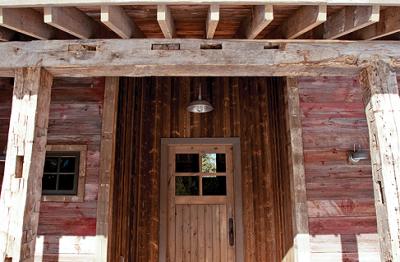
Toward this end the folks at Bitterroot Valley Forest Products of Missoula spent $150,000 developing a wood product that looks and feels like old barns, whether gray, brown, red, or blackened. It costs about half the price as recycled lumber and is far less wasteful. Thirty-seventy percent of reclaimed wood ends up being un-usable due to rot, splits, and defects. And the Ghost Wood product prevents ghost towns and other abandoned structures from being ravaged. According to Mike Thompson of Bozeman’s Kenyon Noble, “There’s a ton of interest in it.”
The idea of coming up with a new product started two years ago. The company originally wanted to develop a product using new wood to make it look old or to make it resemble reclaimed barn wood. Since the employees at Bitterroot Valley Forest Products are native Montanans, they were familiar with the ghost towns and old barns, ranging in shades from brown, rust, black, grey, to silver. Jim Edinger, owner, decided to name their new product “Montana Ghost Wood.”
MontanaGhost Wood products
Bannack Brown is the original color, named after the old structures in Bannack State Park. Most of these buildings have the original wood with a beautiful brown patina.
Silver City is the second color that Ghost Wood produced. The idea was to replicate the silver-gray look of reclaimed barn wood found in the Silver Bow Creek Valley around Butte, where sit some of the most beautiful silver barn wood structures in the state. Because many of the team members have relatives in Butte, it was an easy choice for their second product.
Ruby River is the third color of the Ghost Wood product line. A favorite place to fish, the Ruby River was named for the deceptive red garnets that early settlers mistook for rubies.
Blackfoot is the latest color for Ghost Wood. Like the Ruby River, the folks at the company have spent a lot of time fishing the Blackfoot River. Here too are old wood structures that have aged to a color of black and brown-rust.
Montana Ghost Wood comes not only in colors but also several textures.
• Weathered This texture resembles the worn look of reclaimed wood. The grain of the wood is raised to give it a weathered appearance.
• Circle Sawn Weathered This texture resembles the weathered texture but also reveals subtle saw kerfs beneath the surface. The depth of this texture makes it difficult to notice the difference between Ghost Wood and reclaimed barn wood.
• Montana Hewn This look resembles the traditional drawknife and adzed appearance left behind by the artisans who created it by hand.
The company supports sustainable forestry practices. One way is by using fire and beetle-killed trees. As they explain, selective removal of dead trees reduces crowding, encourages the growth of younger trees, and maintains a diversity of species, ages, and sizes. If done properly, selective cutting decreases the ability of fire to spread, soil to erode, and trees to blow down on campers, roads, power lines.
Until recently cutting dead trees didn’t seem to make sense. But when trees are killed through periodic fires or beetle epidemics, the wood remains and slowly dries out over years—even decades—of low humidity in the Rocky Mountain area. In this way it is naturally cured and becomes extremely stable for use in construction.
When live trees are used for building homes or businesses, allowances have to be made for settling and shrinking. Joints may have to be routed to prevent gaps. The wood must be kiln or air dried. With dead timber the shrinkage and warpage have already occurred. Dead trees dry to the centers of their trunks as they age. Using them is less labor-intensive. Dead timber is also more economical than reclaimed lumber.
Removing dead trees is thus a green, sustainable act, as the lumber can be employed in solid, handsome constructions. Once cleared, the forest can quickly regenerate and make way as it always does for new growth. Using dead trees is much better too than vandalizing old mining camps and ghost towns, which may be historic treasures, of its wood.
The company also supports wood obtained from sawmills that have Forest Stewardship Council (FSC) or Sustainable Forestry Initiative (SFI) certification, which ensures that the wood comes from forests managed in an environmentally sound way.
Montana Ghost Wood is part of an enterprise that has had a long history in Montana. J & R Planning was founded in 1976 and has continued as the parent company of all ensuing entities. In 1990, a second plant, named Montana West, was added to handle a growing demand for the custom packaging of lumber species. In 1993, still another business would be added to the successful J & R family. This facility, the smallest of the three, is known as Western Montana Millwork. It was primarily set up to handle a proprietary trim product, called Alltrim. In the mid-1990’s, management recognized a need for its own sales department in order to ensure future growth for their plants. Thus, in 1997 Bitterroot Valley Forest Products was created. Ghost Wood was launched in 2007.
The parent company, Bitterroot Valley Forest Products, works with the Big Blackfoot Chapter of Trout Unlimited to restore the Blackfoot River watershed. It also contributes to the Montana Ghost Town Preservation Society. The company is proud of its green products—from homes to mantels and doors—and partnering with groups that benefit Montana. Ryan Palma (Sales & Marketing) adds, “Our goal for Ghost Wood is to be a positive influence on all parties we are involved with. From loggers to preservation and everyone in between.” For more information, see bvfpmontana.com or https://mtghostwood.com/.




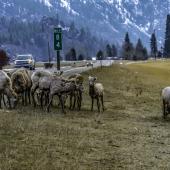

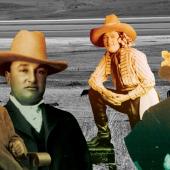
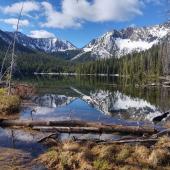

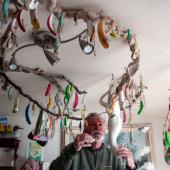


Leave a Comment Here